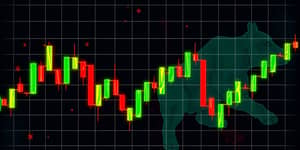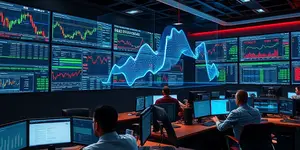
The fear of a sudden market collapse can keep even seasoned investors awake at night. In today’s fast-paced world, asset prices can soar on hype and optimism, only to come crashing down without warning. Yet by understanding the warning signs and applying disciplined methods, you can shield your portfolio and seize opportunities even amid mania.
This article explores unsustainable price increases beyond fundamentals, historic bubble episodes, and practical safeguards. With a combination of data-driven analysis and behavioral insights, you’ll learn to anticipate trouble and act decisively before a bubble bursts.
At its core, a market bubble represents a cycle where asset valuations detach from reality. Prices ascend rapidly, fueled by speculative demand and contagious optimism. Despite lofty price tags, intrinsic value cannot catch up, and the system becomes fragile.
Key characteristics include euphoric speculative investor sentiment surges and compelling market narratives and transformative stories. Whether driven by new technologies or easy credit, bubbles share a familiar arc: expansion, peak, and collapse.
While every bubble is unique, patterns repeat. Retail participation often spikes, margin borrowing rises, and trading volumes hit record highs. Recognizing this pattern equips you to question the prevailing narrative and adjust your strategy.
Identifying bubbles requires vigilance. No single indicator offers perfect foresight, but a convergence of red flags can signal trouble on the horizon. Watch for:
When these factors align—especially in markets already trading at lofty valuations—you should heighten your scrutiny. An inflated Price-to-Earnings ratio, for example, often precedes a downturn. S&P 500 P/E above 30 or a Shiller CAPE heating beyond historical averages demands caution.
Historical bubbles offer invaluable lessons. Consider the dot-com boom of the late 1990s. As internet stocks promised boundless growth, NASDAQ’s P/E ratio climbed above 200. Retail investors poured in, crypto-style newsletters touted “guaranteed gains,” and IPOs multiplied.
By 2000, the narrative unraveled. Exuberant valuations collapsed, leading to trillions of dollars of lost market value. Similarly, the 2008 housing bubble combined loose lending standards and speculative home flipping, only to burst under the weight of unsustainable mortgages.
More recently, cryptocurrency experienced blistering rallies followed by harsh corrections. When prices double in weeks without clear use cases, alarm bells should ring. In each episode, the same warning signs—soaring leverage, irrational narratives, and liquidity booms—preceded the crash.
Once you understand bubble dynamics, you can adopt tactics that balance growth and safety. Key steps include:
Practical tools—like automated alerts when valuations exceed thresholds—can ensure you act swiftly. Combining fundamental checks with technical analysis provides a dual layer of insight.
Beyond numbers, behavior plays a huge role. Investors often fall prey to FOMO and groupthink. A mindful mindset—grounded in patience and humility—can shield you from herd-driven errors.
Develop a structured checklist for new investments. Question every “this time is different” claim. Before adding risk, ask: “Are fundamentals justifying today’s price?” If the answer is no, it may be best to wait on the sidelines.
Finally, cultivate resilience. Accept that markets will ebb and flow. By keeping emotions in check and sticking to your plan, you transform uncertainty into opportunity.
Market bubbles may seem unpredictable, but patterns repeat. By recognizing the hallmarks of speculative manias—euphoric market behavior, extreme valuations, liquidity surges—you gain early warning. Coupling quantitative metrics with disciplined, mindful investing empowers you to navigate turbulent times and preserve capital.
Every cycle offers lessons. Use them to build a robust framework that anticipates risk, adapts to change, and seizes the potential of market resets. With vigilance, patience, and systematic strategies, you can turn bubble trouble into an opportunity for lasting financial growth.
References













